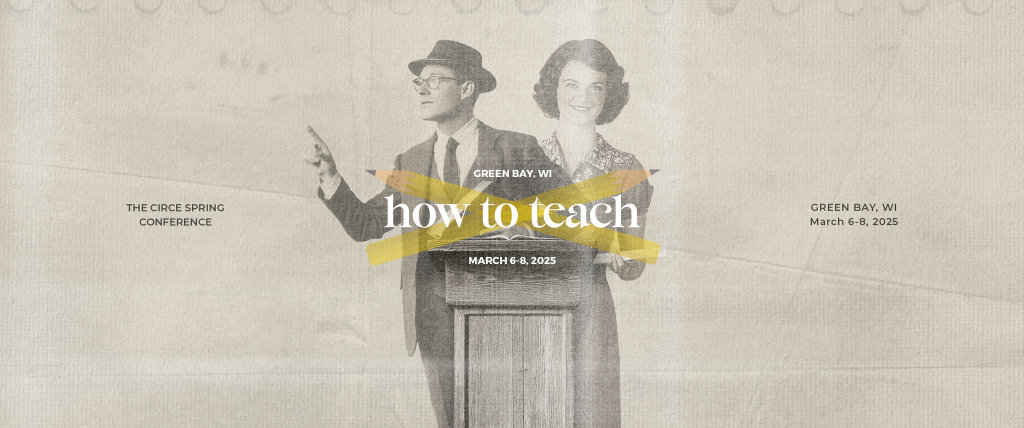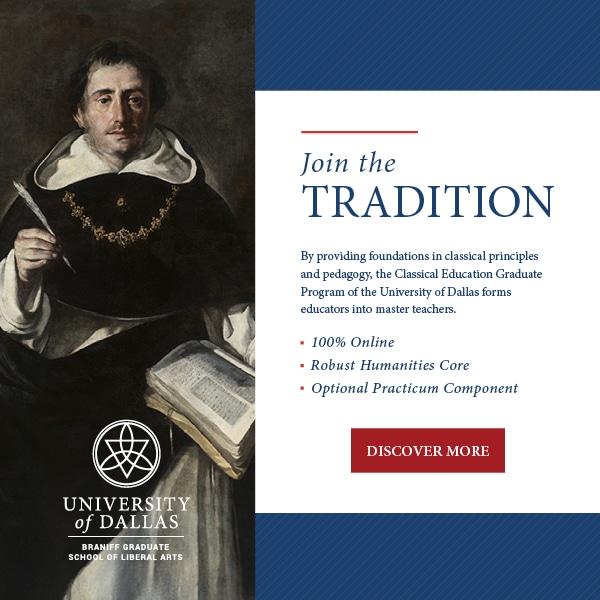Tried and True

Teaching is a difficult profession. Many experienced teachers can look back on their early days and identify a mentor who listened to their problems and frustrations with the classroom, and then provided counsel and encouragement. Without the practical wisdom, simple tips, and the support of a comforting voice, many more would exit the teaching profession sooner (about 30-40% of teachers quit in the first five years).
Daniel Coupland, Hillsdale professor and dean of Hillsdale’s MA in Classical Education, prefaces his book with a similar story from his own life. In his first year teaching, he would seek out the French teacher, and Mademoiselle Nork would patiently hear his complaint and then respond with some advice. Coupland writes that these conversations “probably saved my teaching career” (viii).
While there is no substitute for the directed guidance and patient ear of a companion, Coupland has written Tried and True as a pedagogical primer in an attempt to stave off some of the challenges faced by first year teachers. He aims for the book to be “clear, brief, bold” (xiv). It is a short book—I read it in about 30-45 minutes. It is also direct and prescriptive in a manner that may be helpful to rookies. Most of the advice should be old tricks for old dogs. In fact, if an experienced teacher saw someone violating one of the tips in the book, he would likely shake his head and say, “rookie mistake,” and then offer one of these tips in his own fashion. Nevertheless, there will likely be one or two things that Coupland crystalizes for old teachers—such as reverting to verbal feedback for the whole class if you correct the same mistake on three students’ assignments.
Even though Coupland self-describes the book as “clear, brief, bold,” most of the complaints about it will be because the book is too clear, too brief, or too bold. It’s not a comprehensive manual of pedagogy. He doesn’t lay out the classical principles behind each tip. Much of the advice is commonsense to veteran teachers. Yet it is a concise compilation of the sort of practical advice that first year teachers need to hear. It is something that could easily be read and reviewed through the year as they attempt to implement sound practices to orient their classrooms to the good, true, and beautiful.
In the book, Coupland lays out fourteen main imperatives with accompanying tips or implementations. In this manner, the book is similar to the Seven Laws of Teaching, although the rationale and examples are far more brief. Coupland’s imperatives are:
- Follow the School’s Mission
- Lead the Students
- Establish Useful Routines
- Define Expected Behavior
- Enforce Rules Fairly
- Include Parents Regularly
- Plan Lessons Purposefully
- Begin and End Lessons Well
- Show and Tell
- Ask Good Questions
- Lead Engaging Discussions
- Use Small Groups Wisely
- Assess Students Regularly
- Provide Constructive Feedback
If it sounds like vanilla advice, that’s because it is. Coupland himself notes that teaching is incredibly complex, depending on a wide array of factors from lighting to temperature to the season. Further, “like great writers, great teachers are often idiosyncratic—if not downright quirky. And there’s a good chance that their peculiarities contribute in some way to their greatness, a fact that makes ‘great teaching’ almost undefinable” (xii). Thus, rather than immediately trying to prescribe rules for great teaching, we should start with sound and good teaching, even though “the best teachers may at times violate the rules of sound pedagogy for ‘some compensating merit,’ but many do so intentionally with full awareness of the underlying pedagogical principle” (xii).
Teaching is not only complex, it is a human art, which means that new teachers should first nail the basics as they inflect sound principles with their own personality and humanity. Following this method is far likelier to produce a solid teacher who lasts than encouraging new teachers to “be themselves” apart from reliable pedagogical practice.
It may be helpful at this juncture to give a word about the hierarchy of teachers. Perhaps like every creative profession that seeks to stamp the soul on the world, there are varying levels of genius in teaching. A school should be seeking out these truly great teachers who provoke students to greater contemplation, whose classroom discussions spill over into lunch and after school, and whose charisma keeps bringing students back after graduation. But such teachers are rare because of their greatness. There is a place for many solid and good teachers who are reliable, dependable, steady. In fact, the majority of the school will be made up of these common and ordinary teachers who show up every day and teach with joy. These are the teachers who would likely be most helped by Coupland’s rules.
For schools who are looking to form stalwart teachers, this book would make an excellent primer and reference for new teacher training. It is quick-hitting pedagogical training that also has many reminders that even an experienced teacher would do well to hear. “Men more frequently require to be reminded than informed.” Tried and True delivers needed reminders in concise fashion. Here are some samples of the kind of advice you can expect:
When dealing with difficult students, “you would be wise to seek out the advice of more experienced colleagues who have spent years—if not decades—dealing with students” (27).
Regarding parent communication, “don’t wait for bad things to occur before you call home. Connect regularly with parents about positive things, too. In fact, it might be helpful to make at least one positive telephone call for every ‘problem’ phone call you make. Or challenge yourself to make at least one celebratory phone call per week for the entire school year” (31).
On academic work, “more work (quantity) can be less effective (quality) in helping students learn if the work grinds the student down and wears them out. So with certain material, less work can ultimately be more effective if the work is specifically targeted at helping the students understand the content of the lesson” (51).
With informal assessments, call on both volunteers and “victims.” This keeps the class engaged while also provided opportunity for those that have studied or know to demonstrate their understanding. Provide students with ways of answering a question besides the cop-out, “I don’t know.” Instructing them to ask a follow-up question, request clarification, or appeal to answer after another student keeps them engaged and “on-the-hook” (56, 60).
Teaching is a complex art, and it is also personal. While all of the advice in the book needs to be said and heard, it cannot be a substitute for personal relationships with other teachers and mentors for mutual encouragement, support, and sharpening of skills. Coupland had Mademoiselle Nork in his first year; I had my own saint in my ninth. Every teacher needs to find his own mentors and friends to make it through this challenging but rewarding profession.
Austin Hoffman
Austin Hoffman has written articles for Front Porch Republic, The Imaginative Conservative, and Classis. He loves his wife and three boys dearly.









